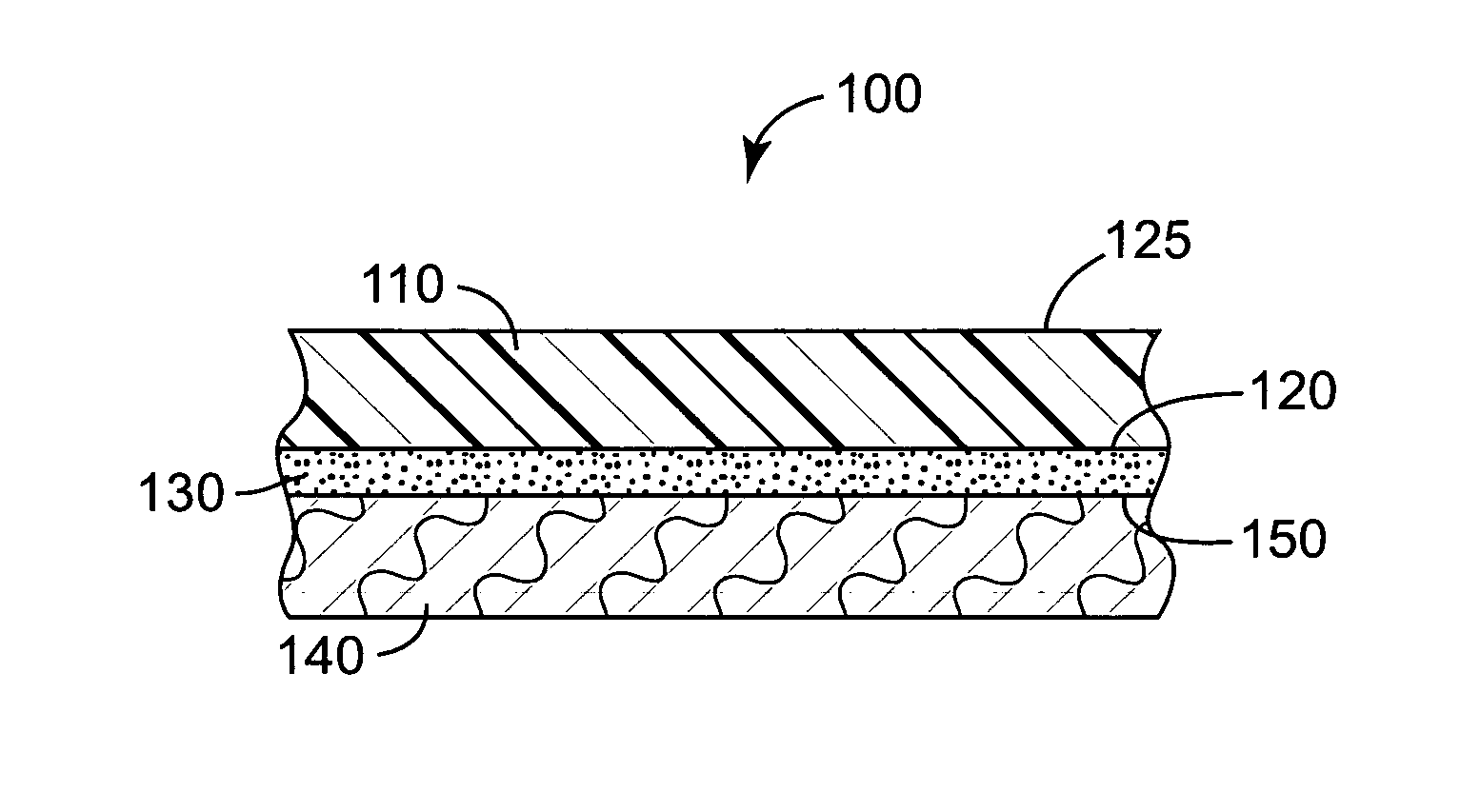Hydrophilic articles
- Summary
- Abstract
- Description
- Claims
- Application Information
AI Technical Summary
Benefits of technology
Problems solved by technology
Method used
Image
Examples
example 1
Part I: Preparation of Adhesive Sample
[0094] A mixture of Adhesive-1 and 6.7% by weight of Additive-1 was prepared and coated at a thickness of 0.76 millimeters with a doctor knife onto a Release Liner, and allowed to dry at room temperature for three days to give a dry adhesive thickness of approximately 0.30 millimeters. The final concentration of Additive-1 in the dried adhesive was approximately 15% by weight.
Part II: Preparation and Testing of Laminates
[0095] Three tapes of the adhesive sample prepared in Part I above were prepared by laminating adhesive samples to three samples of PE Film-1. The release liners were removed from each of these tapes and the adhesive sides of each tape was laminated to a glass slide to form a 3 layer laminate. One laminate was placed to age in an 80° C. oven, the second laminate was placed to age in a 40° C. oven, and the third laminate was aged at room temperature. The sample laminates were tested after 3 days by the Surface Wetting Screeni...
example 2
Part I: Preparation of Adhesive Sample
[0098] A mixture of Adhesive-1 and 6.7% by weight of Additive-1 was prepared and coated at a thickness of 0.64 millimeters with a doctor knife onto a Release Liner, and allowed to dry at room temperature for three days to give a dry adhesive thickness of approximately 0.25 millimeters. The final concentration of Additive-1 in the dried adhesive was approximately 15% by weight.
Part II: Preparation and Testing of Laminates
[0099] Three tapes of the adhesive sample prepared in Part I above were prepared by laminating adhesive samples to three samples of PE Film-2. The release liners were removed from each of these tapes and the adhesive sides of each tape was laminated to a glass slide to form a 3-layer laminate. One laminate was placed to age in an 80° C. oven, the second laminate was placed to age in a 40° C. oven, and the third laminate was aged at room temperature. The contact angle was measured for these laminates before and after 15 days ...
example 3
Part I: Preparation of Adhesive Sample
[0102] Same as Example 2.
Part II: Preparation and Testing of Laminates
[0103] Three tapes of the adhesive sample prepared in Part I above were prepared by laminating adhesive samples to three samples of PP Film. The release liners were removed from each of these tapes and the adhesive sides of each tape was laminated to a glass slide to form a 3-layer laminate. One laminate was placed to age in an 80° C. oven, the second laminate was placed to age in a 40° C. oven, and the third laminate was aged at room temperature. The contact angle was measured for these laminates before and after aging. The results are shown in Table 2.
PUM
| Property | Measurement | Unit |
|---|---|---|
| Microstructure | aaaaa | aaaaa |
| Amphoteric | aaaaa | aaaaa |
| Sensitivity | aaaaa | aaaaa |
Abstract
Description
Claims
Application Information
 Login to View More
Login to View More - R&D
- Intellectual Property
- Life Sciences
- Materials
- Tech Scout
- Unparalleled Data Quality
- Higher Quality Content
- 60% Fewer Hallucinations
Browse by: Latest US Patents, China's latest patents, Technical Efficacy Thesaurus, Application Domain, Technology Topic, Popular Technical Reports.
© 2025 PatSnap. All rights reserved.Legal|Privacy policy|Modern Slavery Act Transparency Statement|Sitemap|About US| Contact US: help@patsnap.com



